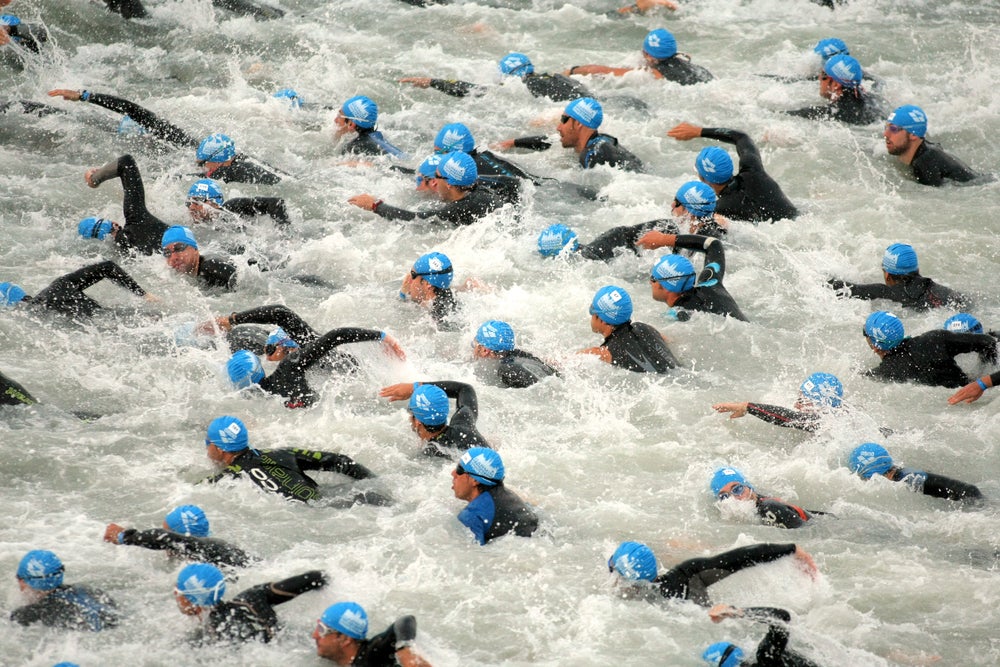Ask Coach Sara: Fear Of Being Trampled

Photo: <a href="http://www.shutterstock.com/gallery-224068p1.html?cr=00&pl=edit-00">Maxisport</a> / <a href="http://www.shutterstock.com/?cr=00&pl=edit-00">Shutterstock.com</a>
Your Twitter questions about swimming as a triathlete, answered by coach Sara McLarty.
Q: What are some suggestions to get over the fear of being “trampled” by other swimmers?
—@Baseball_Kay
A: Start by training in the pool with other athletes. Encourage your training partners to do sets like “three-wide,” where three swimmers swim side-by-side-by-side in the lane. Eventually, find a training group or club in your area that does open-water swim sessions. Use these opportunities to grow comfortable being jostled and bumped in the water. Finally, start the race near the back of your wave to stay away from the more competitive (and therefore aggressive) swimmers and chaos that accompanies a mass start.
Q: I do bilateral breathing in the pool, but in open-water races I only breathe on one side. Should I start training this way?
—@ChiTriBloggers
A: Yes, you should start training with single-side breathing when you are training at a high intensity (similar to race effort). This simply means that you require more oxygen when you are swimming hard; there is no reason to try to change. However, you should not stop bilateral breathing during the remainder of your training (lighter intensity sets) to maintain a balanced stroke, good technique and the ability to comfortably breathe to both sides.
RELATED: A Better Way To Breathe?
Q: What is the best way to taper my swim workouts before a race?
—@OkotoksLawyer
A: Reduce your total yardage but still include short sets of high intensity to maintain speed. Continue to swim three or more times per week so that you do not lose your “feel” for the water, but make each session about two-thirds of your usual training time. Start with a good warm-up and drill set to get loose. Next, do a high-quality set like 8×50 with 15 seconds’ rest (alternate one 50 fast and one 50 easy). Finish the workout with a long and easy swim or pull to maintain endurance.
RELATED – One-Hour Workout: Race-Day Pool Prep
Q: Why do I feel slow during open-water workouts versus in the pool?
—@MikeKirkmire
A: It’s a bit of an apples and oranges comparison. The pool is a very controlled environment with lane lines, walls and a black line to follow. Swimming in open water has the disadvantage of no walls to rest and push off of, no straight black line and no lines to block the waves and other swimmers. A swimmer might exert the same effort and find himself covering a much shorter distance. Fortunately, every athlete in the race is faced with the same conditions on race day and must rely on his training to get to the swim exit.
RELATED: Open-Water Swimming Tips From The Pros
Follow Triathlete on Twitter @Triathletemag for inspiration, new workout ideas, gear reviews from our editors and more.